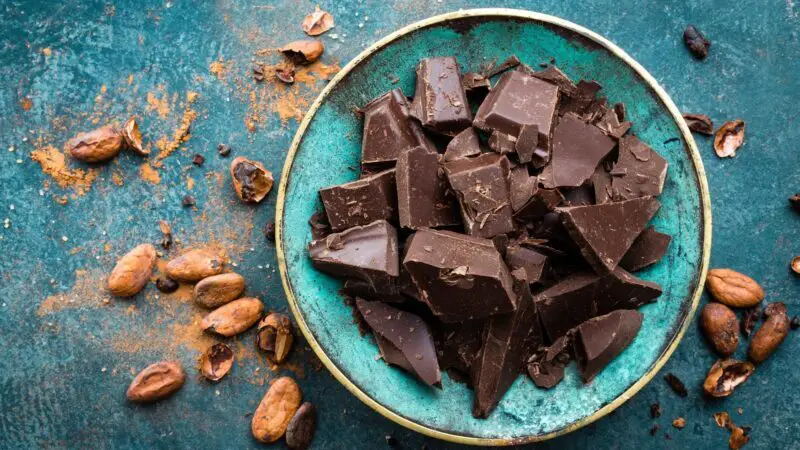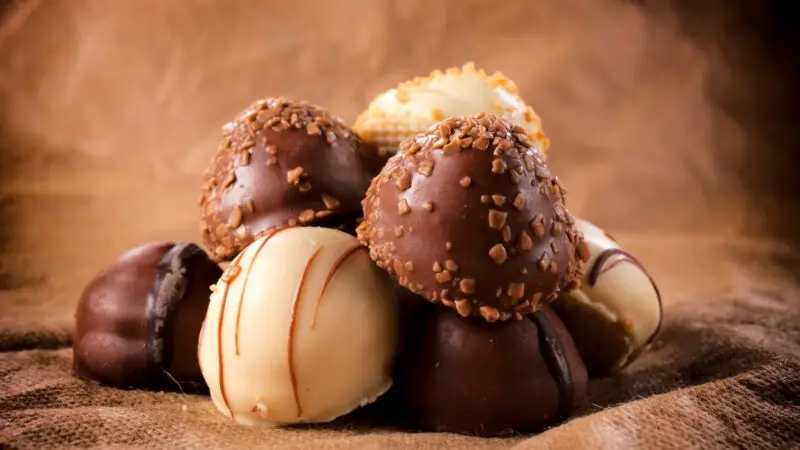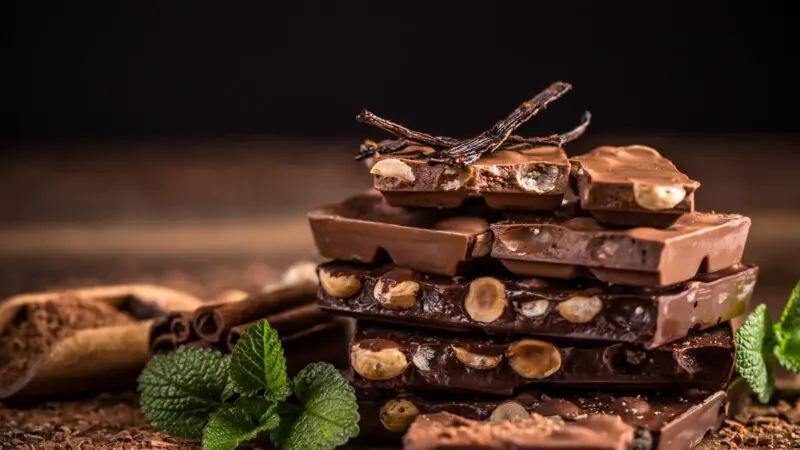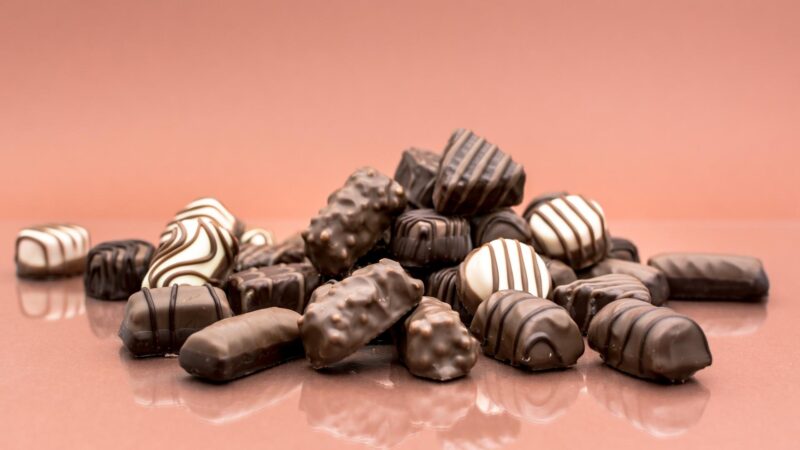Sweets such as chocolate have long been a favorite in our culture. Chocolate improves our mood and satisfies our sugar cravings. It is so delicious that our pets sometimes enjoy it as well. However, our guinea pigs cannot enjoy this delicious treat.
Guinea pigs cannot eat chocolate. The guinea pigs have fragile and very sensitive digestive systems so because of that they cannot digest sugars well. Consuming sweets causes them cramps and pains or even stool changes.
Table of Content
Nutrition Facts on Chocolate

Here are the nutrition facts for 100 g (3 oz) of chocolate, dark:
- High in calories – 599
- High in carbs – 45.8 g
- Protein – 7.8 g
- Fiber – 10.9 g
- High in sugar – 24 g
- High in fat – 42.7 g
- Vitamin A – 1%
- Vitamin K – 9%
- Thiamin – 2%
- Riboflavin – 5%
- Niacin – 5%
- Vitamin B6 – 2%
- Vitamin B12 – 5%
- Pantothenic acid – 4%
- Calcium – 73 mg
- Iron – 11.9 mg
- Magnesium – 228 mg
- Phosphorus – 31%
- Potassium – 20%
- Zinc – 22%
- Copper – 88%
- Manganese – 97%
- Selenium – 10%
- Cholesterol – 2 mg
Is Chocolate Bad for Guinea Pigs? | Possible Risks

- Rapid weight gain – Chocolate is full of calories, carbs, sugar, and fat. All of these nutrients cause the most weight gain, especially if consumed in excess.
- Digestion problems – In chocolate, there is also theobromine and sugar. These two nutrients will cause instant cramps and pains in the stomach of the guinea pig. The sugars will upset the digestion, and the theobromine can even cause nausea.
- Heart pressure problems – The nutrient theobromine in chocolate also acts like caffeine. It stimulates the nervous system and it speeds up the metabolism, so it means the heart works faster too. The increased heart rate can be very dangerous for the cavy, even fatal.
- Urinary problems – The two extremely dangerous nutrients in chocolate are the calcium and phosphorus. The calcium and phosphorus can cause bladder and kidney stones, blood in urine, painful urinating, and urinary infections too. If this is not cured in time, it can develop into renal failure.
My Guinea Pig Ate Chocolate! What Should I Do?

First, don’t panic. It depends on how much did the guinea pig eat. If it was just a little bit, the guinea pig will probably be fine, with some cramps or digestive problems, unfortunately. If it was a lot of chocolate, there could be severe digestive issues and diarrhea even, along with nausea too.
Whatever the amount was, pay close attention to the guinea pig; how it behaves, does it look sick or nauseous, does it make upset sounds, and monitor the stool too.
It is a good idea to call the vet or see him if this happens. In the meantime, make sure the guinea pig drinks some water, or munches on some cucumber, or lettuce. This can help the cavy feel a bit refreshed and hydrated.
Fun Facts on Chocolate

- Did you know about the strange invention of the M&Ms? They were invented for the purpose of soldiers carrying chocolates with them when the weather was hot.
- Chocolate doesn’t quite melt in the hands, it melts in your mouth!
- Often, in bookstores, there is a smell of chocolate, and this increases sales! A study found out that this scent made all book customers buy more and browse more books.
- The biggest chocolate bar in the world weighed 12.770 lbs and it was made in the UK.
- White chocolate is not chocolate, technically. It doesn’t have the brown cocoa solids as the regular chocolate. This is simply just sugar and cocoa butter, not a cocoa bean!
- To make one pound of chocolate, you need 400 cocoa beans.
- A cacao tree produces 2.500 cacao beans.
- For a tree to produce the very first cacao beans, you would have to wait circa 5 years.
- Red wine has 200 flavor compounds, but chocolate has more than 600!
- In the past, cacao beans were so valuable. They were used as currency.
- The tree that is used for making chocolate is called Theobroma cacao, and this also means ‘food of the gods.’
- The first chocolate bar worldwide was made by the English brand for chocolates, Cadbury, back in 1842.
- The famous Nutella was invented in WW2. The Italian chef and pastry maker mixed some hazelnuts into chocolate to increase the amount of this ‘food’ item.
We have also made a full list of foods that guinea pigs can and can’t eat (150+ Types of Foods). Be sure to also check our recommended products page for everything you will ever need to assure a happy life for your guinea pigs. Hope this information was helpful and you have found the answer you were looking for.
List of Sources
Nutrient Requirements of Laboratory Animals: Fourth Revised Edition
The Effects of Diet on Anatomy, Physiology and Health in the Guinea Pig
